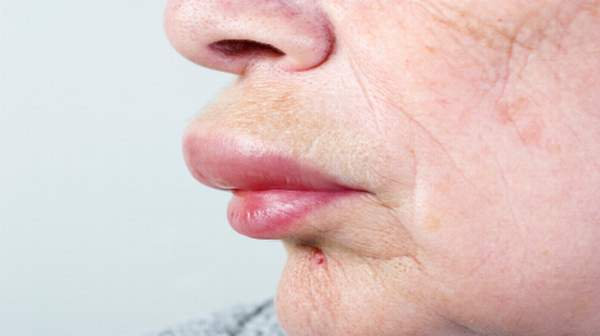What's in this article?
What is Angioedema?
Angioedema is a skin reaction similar to hives or urticaria. It is most often characterised by an abrupt and short-lived swelling of the skin and mucous membranes. All parts of the body may be affected but swelling most often occurs around the eyes and lips. In severe cases the internal lining of the upper respiratory tract and intestines may also be affected.
Causes of Angioedema
Angioedema may be caused by an allergic reaction. During the reaction, histamine and other chemicals are released into the bloodstream. The body releases histamine when the immune system detects a foreign substance called an allergen.
In most cases, the cause of angioedema is never found.
The following may cause angioedema:
- Animal dander (scales of shed skin)
- Exposure to water, sunlight, cold or heat
- Foods (such as berries, shellfish, fish, nuts, eggs, and milk)
- Insect bites
- Medicines (drug allergy), such as antibiotics (penicillin and sulfa drugs), nonsteroidal anti-inflammatory drugs (NSAIDs), and blood pressure medicines (ACE inhibitors)
- Pollen
Hives and angioedema may also occur after infections or with other illnesses (including autoimmune disorders such as lupus, and leukemia and lymphoma).
A form of angioedema runs in families and has different triggers, complications, and treatments. This is called hereditary angioedema.
Symptoms of Angioedema
The main sign of angioedema is swelling that develops below the skin’s surface.
Swollen skin
The swelling is caused by a collection of fluid in the deep layers of the skin.
It most often affects the hands, feet, eyes, lips, or genitals. In severe cases, the inside lining of the throat and bowel can be affected (see below).
The swelling usually appears suddenly, and is more severe than normal hives (nettle rash). It commonly lasts one to three days. There may be a prickling sensation in the affected area before swelling is visible.
The swelling is not itchy and the skin may look a normal colour; however, many people with allergic or idiopathic angioedema also develop urticaria (hives), which is red and itchy.
Other symptoms
As well as visible swellings, angioedema can cause other symptoms, including:
- a hot or painful sensation in the swollen areas
- swelling of the inside of the throat, the windpipe and the tongue, making breathing difficult
- swelling of the conjunctiva (the transparent layer of cells that cover the white part of the eye), which affects vision
People with hereditary angioedema may also experience:
- abdominal (stomach) pain caused by swelling in the stomach and bowel, which can cause nausea, vomiting and diarrhoea
- swelling of the bladder or urethra (the tube that connects the bladder to the genitals), which can cause bladder problems and difficulty passing urine
Risk factors of Angioedema
Hives and angioedema are common. You may be at increased risk of hives and angioedema if you:
- Have had hives or angioedema before
- Have had other allergic reactions
- Have a disorder associated with hives and angioedema, such as lupus, lymphoma or thyroid disease
- Have a family history of hives, angioedema or hereditary angioedema
Is Angioedema dangerous?
Angioedema does not damage internal organs like kidneys, liver or lungs. The only danger is if the throat or the tongue swell severely. Since this can cause difficulty breathing, it is a symptom that needs to be taken seriously. Severe throat swelling requires early use of medication and transfer to hospital or your doctor. Swelling that interferes with breathing is uncommon even in those with recurrent angioedema. Swelling on the outside of the neck is uncomfortable but does not affect breathing.
Who is Most At Risk for Angioedema?
Factors that increase the risk for angioedema include:
- Having hives or angioedema before
- Having a body-wide allergic reaction in the past
- Experiencing injury
- Sudden temperature changes
- Stress or anxiety
- Undergoing a dental procedure
- Having ovarian cysts
Also, women are affected by angioedema more often than men.
Treatment for Angioedem
Mild symptoms may not need treatment. Moderate to severe symptoms may need to be treated. Breathing difficulty is an emergency condition.
People with angioedema should:
- Avoid any known allergen or trigger that causes their symptoms
- Avoid any medicines, herbs, or supplements that are not prescribed by a health care provider
Cool compresses or soaks can relieve pain.
Medications used to treat angioedema include:
- Antihistamines
- Anti-inflammatory medicines (corticosteroids)
- Epinephrine shots (people with a history of severe symptoms can carry these with them)
- Inhaler medicines that help open up the airways
If the person has trouble breathing, seek immediate medical help. A severe, life-threatening airway blockage may occur if the throat swells.







